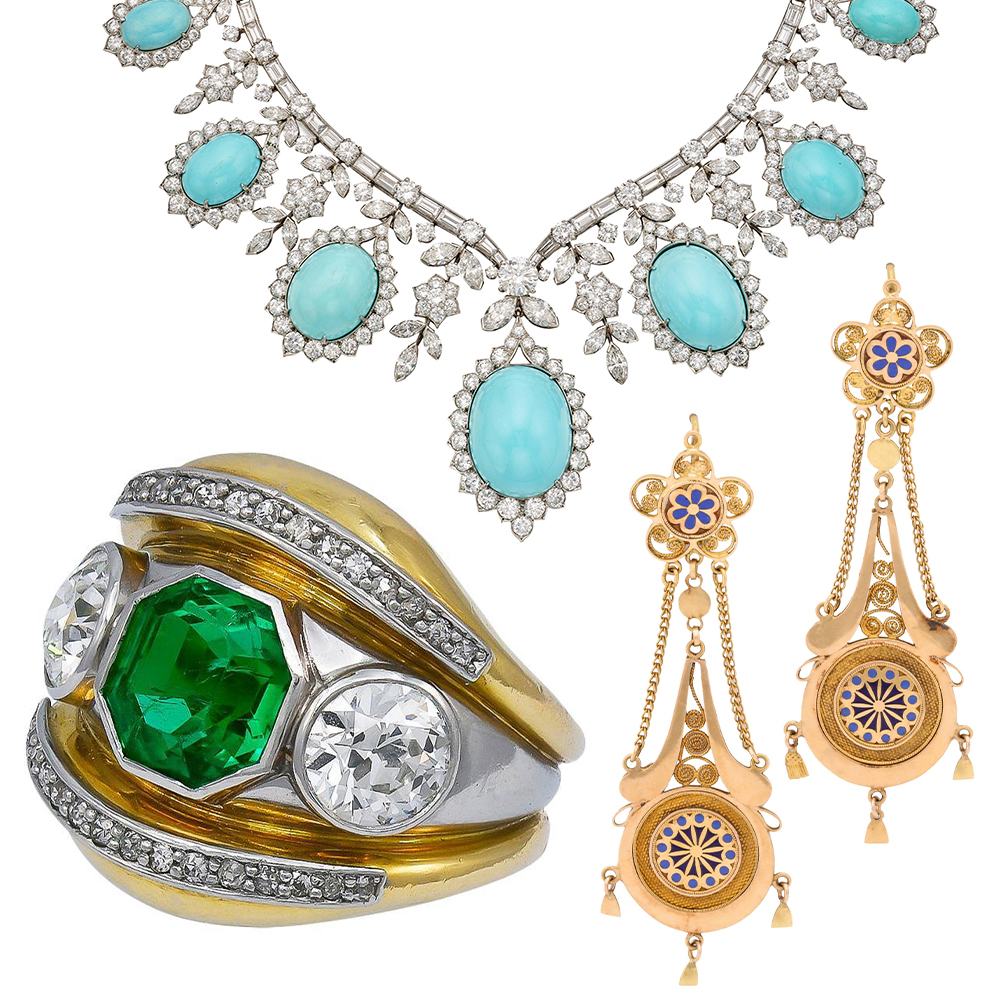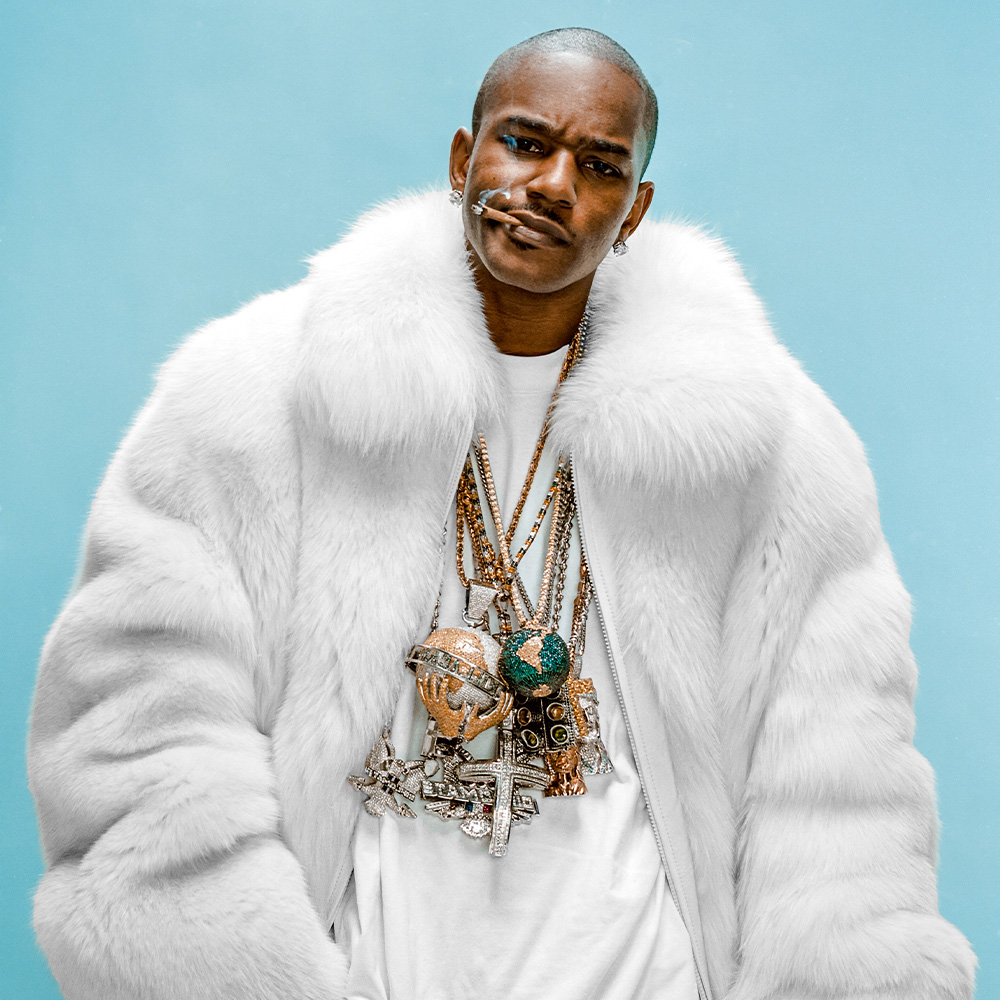
September 25, 2013This necklace, featuring natural pearls set in colored gold, dates back to the middle of the 19th century. © Victoria and Albert Museum, London. Top: Lady Rosebery’s pearl-and-diamond tiara, ca. 1878, is one of the crowning achievements of the V&A’s show. The Qatar Museums Authority Collection. Photo © Christie’s Images
Mysterious, luminous and romantic as moonlight, pearls have been treasured since ancient times. Yet after the swinging ’60s, they were relegated to the world of debutantes and dowagers: classy but not cool. Now, however, these rare, naturally derived gems are once again considered high fashion, even edgy when worn with jeans. And prices are skyrocketing.
Given all this, “Pearls,” the enticing, eye-opening exhibition currently on view at the Victoria and Albert Museum, in London, comes at just the right time. Running until January 19, 2014, the show celebrates the gem’s comeback with more than 200 objects, both ancient and contemporary, plus marvelous pearls paired with jewels (a striking Roman hair ornament from the 3rd century AD, for example, combines pearls with sapphires, emeralds and gold) and, better still, shown as bare as the day they were pried out of oyster shells.
Perfectly round pearls have always been prized, while misshapen ones, called baroque, came into particular fashion during the Renaissance, when, like children seeing creatures in the clouds, goldsmiths were inspired to fashion fabulous pieces that resembled familiar or fanciful animals, several of which are in the show. On view, too, are pearls with royal associations; historic portraits of pearl-draped aristocrats (male as well as female); examples of the paraphernalia used by the divers who brought up pearls from the ocean floor and the traders who took them to market in India, China and Europe.

A German cross pendant, 1500–25, combines natural pearls with gold and rubies. © Victoria and Albert Museum, London
Pearls worn by Elizabeth Taylor (who adored jewels) and Marilyn Monroe (who did not) are here, as is a pearl-encrusted gown worn by Queen Elizabeth II on a state visit to Qatar, in the Persian Gulf. (The show is part of Qatar UK 2013 Year of Culture.) The most poignant object on view is a single, large pearl-drop earring. It was worn by King Charles I of England in 1647 on the day he was beheaded. It remains in the family of the aristocrat to whom he bequeathed it.
Introspective contributor Paula Weidger spoke with Beatriz Chadour-Sampson, co-curator of the V&A exhibition, about the enduring allure of pearls.
“Pearls” is a partnership between the V&A and the Qatar Museums Authority (QMA). Hubert Bari, director of Qatar’s proposed pearl-and-jewelry museum — and the author of the first two chapters of this show’s catalog, which concentrate on how pearls are made and the history of pearl fishing — has already staged pearl exhibitions in Doha, Paris and Kobe, Japan. How does this one in London differ?
Hubert Bari is a specialist in natural history, which was the emphasis of the other shows. I was asked to adapt the exhibition for the V&A because I was consultant curator of its William and Judith Bollinger jewelry gallery. I wrote the remaining six chapters of the book, which examine the history of pearls, the focus of this exhibition.

A highly figurative brooch called Grand Jeté, made by Geoffrey Rowlandson in 1999, incorporates gold and diamonds with two cultured baroque pearls. © Geoffrey Rowlandson

This rare selection of natural pearls comes to the V&A show from the collection of the Qatar Museums Authority, which co-organized the exhibition. The Qatar Museums Authority Collection Photo © Creutz
The display opens with an evocation of the cabinets of curiosities assembled by Europe’s 18th-century monarchs, aristocrats and scholars, which were filled with treasured objects brought back by explorers such as coconuts, ostrich eggs — and shells.
We have four such cabinets displaying 65 objects. Most of them are shells, which were prized for their beauty, strangeness and variety. The visitor will see that not only oysters and mussels produce pearls; any mollusk can produce one. Many of these creatures lived in salt water, others in rivers. Another surprise will be that not all pearls are white or round or small. There are extraordinary pearls displayed with the shells of the creatures in which they grew. Depending, in part, on the species of the mollusk, the pearls can also be brown, yellow, pink and gray.
Pearls, unlike gemstones, remain exactly as they are found in nature and often are worn directly against the skin. Maybe this is why there is something intimate, even tender, about them. Yet the bygone process of retrieving them was anything but sweetly romantic.
It was a dangerous, demanding life. For thousands of years, the practice remained much the same: A diver wore only a loin cloth, a nose clip and a leather sheaf to protect his hands from the rough shells; he would be out on the boat for several months at a time, his skin encrusted with salt. The basket he took down into the water held only 12 oysters at a time, and I’ve been told that you had to raise 2,000 oysters before you found a pearl. Just imagine how many dives were necessary to create one long, lustrous pearl necklace.

The Qatar Museums Authority Collection also includes Frozen, a necklace that could double as an art piece by the Vietnamese-born, Germany-based designer Sam Tho Duong. Photo © Marc Pelletreau & Samaar Kassab, QMA
Pearls slowly but inevitably disintegrate. Were you able to find sufficient numbers of jewels to illustrate their long and fabulous history?
We have rare survivors from antiquity. To the Romans, who went all the way to south India to buy them, they signified luxury. There was also the added frisson that men risked their lives to find them. Later, pearls embellished religious objects, crowns and tiaras, Imperial Chinese robes and the clothing of Maharajahs. In such cases, special attention was given to protect them.
Fashion, by definition, keeps changing. How has the meaning of pearls changed?
In the Middle Ages, they were signs of wealth and power, but also of purity. They were associated with the Virgin Mary and Christ. In addition, they were believed to have medicinal value. During the Renaissance, the demand for pearls heated up. Rich bankers and merchants vied to have the largest, most lustrous examples. Women were covered in them; they were worn looped in the hair, draped across gowns, sewn onto clothes. In the 19th century, as a result of the Industrial Revolution and the growth of the middle class, demand for pearls spread. They took on romantic, sentimental associations and became not only love tokens but symbols of mourning.


